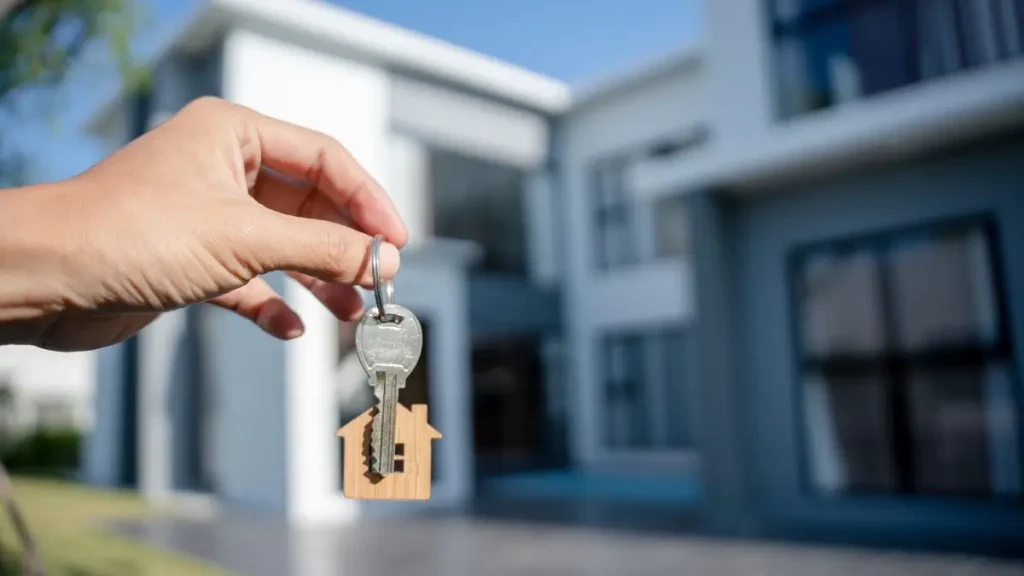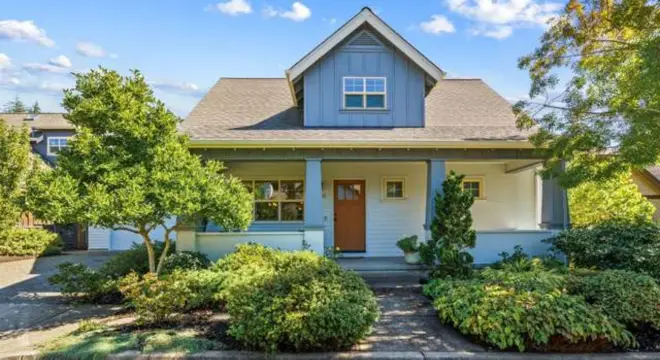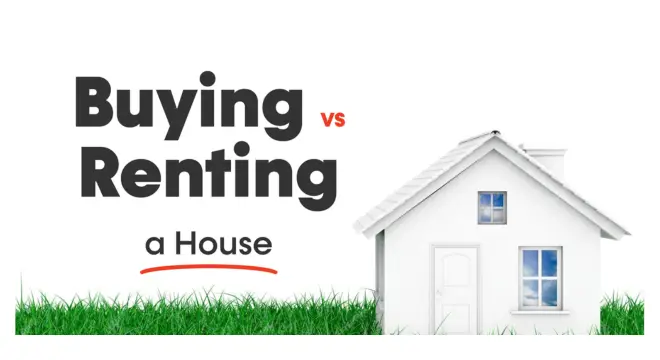US Housing Market Shifts as Buying by New Buyers Declines
Let me be blunt: if you’re trying to buy your first home right now, it probably feels impossible. And you’re not imagining it — the numbers back you up.
In 2024, just 1.1 million Americans managed to buy a home for the first time. That’s nearly 400,000 fewer than in 2023. Compared to long-term averages, we’re talking about half the usual number. This isn’t just a slump — it’s a collapse.
According to the National Association of Realtors, first-time buyers made up only 24% of all homebuyers last year — the lowest on record. That’s despite all the talk about Millennials and Gen Z “finally entering the housing market.” Truth is, most of them are being locked out.
And it’s not getting any easier. The Wall Street Journal recently reported that 2025 might look even worse. Home sales across the board are slowing down, especially in the price ranges that first-time buyers typically aim for — under $500,000. Builders aren’t stepping up either. New construction sales were down 6% in May compared to last year. Less inventory, more demand. You know how that ends.
At the same time, the number of renters in the U.S. has hit a record 46 million. That’s where most would-be buyers are going — not because they want to, but because they have to. According to Harvard’s Joint Center for Housing Studies, you’d need to earn $127,000 a year just to afford the monthly mortgage on a median-priced home.
In 2021, that number was $79,000. What changed? Mortgage rates, home prices, and a system that keeps rewarding cash buyers and sidelining everyone else.
So, no — it’s not about “kids these days not wanting to settle down.” It’s about math. And the math isn’t working in your favor right now.
What’s Really Stopping You From Buying a Home Today?
Let me walk you through what I’ve been seeing — and why it’s not your fault if you’re stuck renting.
According to The Independent, high mortgage rates and unaffordable home prices are creating a brick wall for first-time buyers like you. These aren’t small bumps — they’re structural problems baked into today’s market.
Mortgage Rates Are Killing Your Monthly Budget
You’re not the only one shocked by the numbers lenders are throwing around. A 30-year fixed mortgage is now hovering between 6.8% to 7.2%. That means if you’re eyeing a median-priced home, your monthly payment could easily top $2,800 — and that’s before property taxes or insurance.
Home Prices Aren’t Coming Down
Even with all the market “cooling” talk, prices haven’t dipped enough to help you. Entry-level homes — the kind you and I look for — are still far out of reach. And sellers? Most are holding tight, knowing demand is still strong even with fewer buyers.
Income Isn’t Keeping Up
This one hurts. While housing costs have exploded, wages haven’t kept pace. Add in student loan debt, childcare, or medical bills, and you’re expected to save a down payment in a system that barely lets you breathe.
This section matters because it clears the air. You’re not failing — the system is stacked against you. And recognizing why is the first step to figuring out what you can still do.
Some states are also offering tax credits worth up to $3,200 to support first-time home buyers, especially if you qualify for assistance programs.
Why More People Like You Are Choosing to Rent?

Let me be real: If you’ve decided to stay in a rental for now, you’re not alone. In fact, you’re part of the new normal.
According to The Wall Street Journal, a record-breaking 46 million households in the U.S. are now renting. That’s the highest number ever recorded — and it’s not just college grads and city kids. Families, professionals, even couples in their 30s and 40s who once planned to buy are sticking with rentals.
Owning Is Just Too Expensive Right Now
To buy a median-priced home today, you’d need to earn at least $127,000 per year. Just three years ago, that number was $79,000. Unless your income jumped 60% since 2021, homeownership may simply be out of reach — for now.
Build-to-Rent Neighborhoods Are Growing
Developers have noticed people like you and me are renting longer. So instead of building homes to sell, they’re building entire neighborhoods designed for renters. Suburban rentals are up by 50% in some areas, and more are coming.
Renting Isn’t Always a Step Back
Let’s be honest — for many, renting now is a smarter short-term move than stretching into a mortgage that could bury you. You keep flexibility, avoid maintenance headaches, and stay out of debt that could take decades to undo.
This section matters because it shifts the narrative. You’re not “giving up” by renting — you’re staying smart until conditions change. That’s not defeat. That’s strategy.
We’ve been seeing some great real-world discussions on this topic — especially in property-focused WhatsApp communities where renters are sharing their struggles and strategies in real time.
The Builders Are Slowing Down — And That Hurts You Too
Here’s something I don’t hear enough people talking about: even the people who build homes are starting to pull back. And that affects you more than you think.
In May 2025, new home sales dropped by 6% compared to the same time last year. And here’s why that’s a big deal — builders rely on first-time buyers like you. According to the National Association of Home Builders, first-timers make up 40% of new home sales every year.
But now, with fewer buyers qualifying, builders aren’t taking the same risks. They’re scaling back construction, especially on affordable homes. Think about it — if builders see fewer people like you in the market, they build less. Less inventory means less choice and higher prices.
This matters because it reveals the loop you’re caught in:
Fewer buyers → Fewer homes built → Prices stay high → Even fewer buyers.
You’re not being dramatic if you feel stuck — you’re trapped in a cycle the industry itself is reinforcing.
With sellers now finally starting to outnumber buyers in many regions, the housing market is seeing its first real shift in 12 years. That trend could create opportunities in the months ahead.
Homes Under $500K Are Drying Up — Fast

Let’s not sugarcoat it — if your budget is under half a million, the market’s basically closing its doors on you. That price range, once the sweet spot for first-time buyers, is now the most competitive and under-supplied corner of real estate.
Recent data from the National Association of Realtors shows that sales of homes below $500,000 have seen the steepest decline. That’s no coincidence. That’s where most first-time buyers like you are shopping. But those listings? They’re disappearing fast.
Part of the reason is the rise of investors. When a decent home pops up under $500K, it’s not just young families competing — it’s investors with cash in hand, often buying sight unseen. You can’t beat that when you’re stuck waiting on a pre-approval or scraping together closing costs.
And builders? They’re not helping much either. With material costs up and demand for luxury homes still strong, most of the new construction isn’t even touching the sub-$500K bracket. Affordable homes aren’t being built at the pace they’re needed — and when they are, they’re often being rented out instead of sold.
Is this price range still possible where you live? Drop a comment and tell us what you’re seeing in your local market — we want to hear from you.
If You’re Still Hoping to Buy — These Are Your Smartest Options
Now if you’ve made it this far and still want to buy — respect. You’re doing what millions of others are trying to do too. But in this market, wishful thinking won’t cut it. You need a strategy that actually works with what you’re up against.
First, government-backed loans are still your best friend. FHA and USDA loans were designed for people in your exact position — first-time buyers with limited down payments and imperfect credit. You won’t get the lowest interest rate on earth, but you’ll get a foot in the door.
Then there are down payment assistance programs — and trust me, most people don’t even know they exist. State and local governments, even nonprofits, offer grants or second loans to cover part of your upfront cost. You don’t need to be broke to qualify — just below a certain income level, which many first-time buyers already are.
If you’re open to thinking differently, rent-to-own deals are making a quiet comeback. Some newer build-to-rent communities offer you the chance to convert your lease into ownership after a year or two. It’s not always a great deal, but in the right area with the right terms, it can be a path forward when buying outright is off the table.
And here’s a big one most people skip — fixing your credit score. Even a 20- to 30-point increase can lower your monthly payment by hundreds of dollars. You’ve got tools now: Experian Boost, credit-builder loans, even some secured cards through credit unions that don’t gouge you. Six months of smart credit moves can change your position completely.
What Needs to Change for You to Finally Buy a Home?
If you’re stuck renting, it’s not forever — but the right conditions need to fall into place.
Mortgage rates are the big one. Right now they’re near 7%, but if the Fed starts cutting in late 2025, you could see that dip to the low 6s or even high 5s. That alone could drop your monthly payment by hundreds.
Inventory is another issue. Builders have pulled back, but pressure’s growing to focus on affordable homes again. With the right policies — like tax credits or relaxed zoning — you might see more $300K–$500K homes come back.
And if a mild recession hits (which economists expect by 2026), that could lower home prices temporarily — giving you a window to buy smarter.
Renting vs Buying: The Numbers Have Shifted

You’re not the only one still renting — and financially, that may be your best move right now.
In 2021, you needed about $79,000/year to afford a median home. Today, it’s closer to $127,000. That’s a 60% jump in three years, and wages haven’t kept up.
Rent prices have also risen, but more slowly. In many areas, it’s still cheaper monthly to rent than to buy — especially with today’s interest rates and inflated prices.
If you’re wondering what monthly costs look like in today’s market, this breakdown of a $431K home at a 6.85% rate lays it out in plain numbers.
What Delayed Buying Could Cost You Long-Term?
There’s a hidden cost to waiting — and it’s not just about rent.
Homeowners build equity over time. Renters don’t. That equity can help you move, invest, or retire comfortably.
If you’re still renting in your 50s or 60s, you’ll face housing costs long after others have paid off their homes. And with rents climbing every year, that adds up.
Even if buying isn’t possible now, it should stay on your radar. The earlier you plan for ownership, the stronger your financial future gets.
Final Thoughts
Let’s not pretend this market is easy. If you’re a first-time buyer right now, you’re facing historic obstacles — and it’s not because you didn’t try hard enough.
But staying informed, making smart financial moves, and watching the right signals can still put you in a position to own when the tide turns. Renting isn’t failure. It’s a strategy — until the system shifts back in your favor.
Want more insights like this? Check out our Real Estate & Homeownership section for data-driven updates and smarter strategies.
Disclaimer
This article is for informational purposes only and does not constitute financial or housing advice. All data is based on available reports as of Q2 2025 and may change with market conditions. Always consult a certified professional before making real estate or investment decisions.


